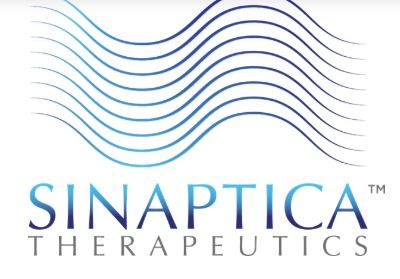Sinaptica Announces Enrollment for Phase 2 Clinical Trial in Early Alzheimer Disease of Dual Neuromodulation System
The proprietary combination of 2 neurostimulation modalities deployed simultaneously may enhance efficacy while reducing treatment time by 70%, the company said.
Sinaptica Therapeutics announced the launch of a phase 2 clinical trial to evaluate its second-generation precision neuromodulation system in patients with early-stage Alzheimer's disease (AD).
Courtesy Sinaptica Therapeutics

The system combines 2 neurostimulation modalities—repetitive transcranial magnetic stimulation (rTMS) and transcranial alternating current stimulation—to potentially enhance treatment efficacy and reduce treatment session time by up to 70%, according to the company statement.
The trial, which has enrolled its first patients, will test the efficacy of Sinaptica's dual stimulation technology in up to 60 adults with early-stage AD in a randomized, double-blind study at multiple centers in Italy.
The dual technology is based on more than a decade of research into neuroplasticity in the brain's Default Mode Network (DMN), including the hippocampus, according to Sinaptica. A recent phase 1 study in healthy volunteers showed significant improvements in long-term associative memory, with gains of 60-80% compared to controls.2 These effects persisted for up to one week.2 "We’re continuing to innovate and evolve our precision neuromodulation therapy to provide the most effective and efficient treatment for patients," Giacomo Koch, MD, PhD, Sinaptica's scientific co-founder, said in the statement.1
The SinaptiStim® System, which received FDA Breakthrough Device Designation in 2022,3 is a non-invasive, personalized neurostimulation therapy targeting the DMN, a brain network involved in memory and introspection. Weekly treatments, which last between 6 minutes for the second-generation system and 20 minutes for the first-generation system, are delivered in a recliner. Sinaptica is also preparing for a pivotal trial using its first-generation SinaptiStim® System in mild-to-moderate Alzheimer's disease.
This next-gen system is covered by Sinaptica's existing patents and is part of a broader product roadmap that may extend beyond Alzheimer’s to other neurodegenerative diseases and even memory enhancement in healthy aging. "This novel next-gen approach incorporating simultaneous stimulation has the potential to act as a future upgrade to our current therapy for Alzheimer’s," Ken Mairash, Sinatptica CEO said.
“Our goal with these improvements is to further enhance the overall efficacy of the treatment as well as reduce the time required for each treatment. We hope that this trial will expand the evidence that our neuromodulation of the DMN can be as effective – or even more effective—in early AD, as it has been in mild-to-moderate disease with the first-generation technology,” Koch added.
Koch recently presented promising Phase 2 results from the first-generation system at CTAD 2024, which showed significant slowing of Alzheimer’s progression across key clinical measures in cognition, function, and behavioral disturbances. No serious side effects were reported during the trial.
Synaptica is also preparing for a pivotal randomized controlled clinical trial in mild-to-moderate AD with this first-gen system. In this trial, the treatment will be calibrated quarterly using TMS and EEG concurrently in combination with MRI-guided neuronavigation.1 The precision approach enables the system to achieve “precise repeatable targeting and dosage for each patient,” according to Synpatica. The system will track progress and self-adjust over time for optimal individual outcomes. The pivotal trial will also be designed to determine the effects of the neuromodulation on several biomarkers, measuring beta amyloid, phosphorylated tau, neural inflammation, and synaptic dysfunction.1